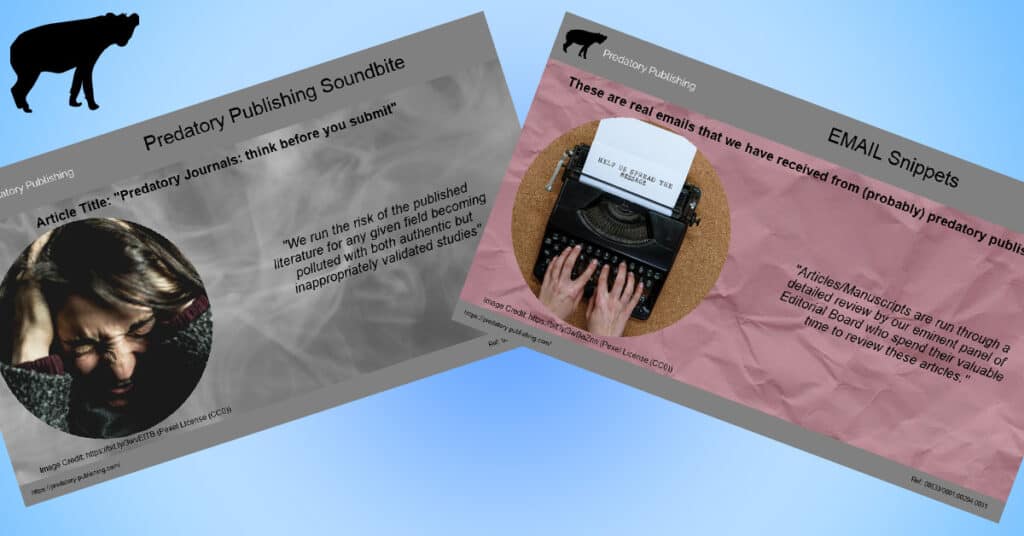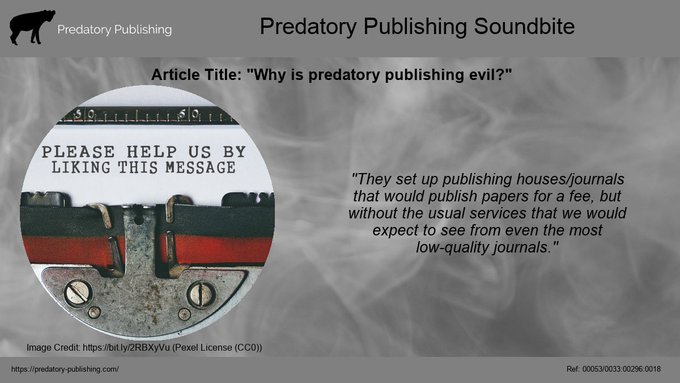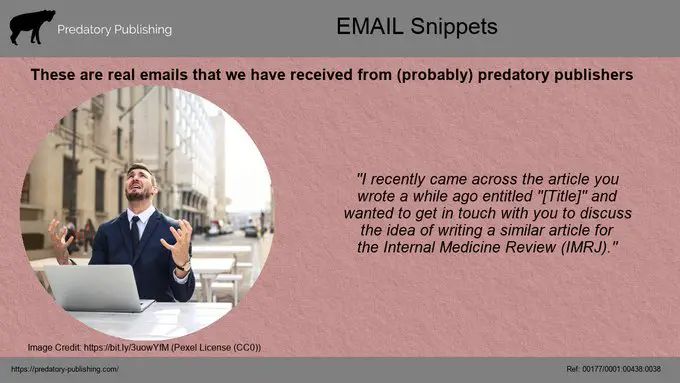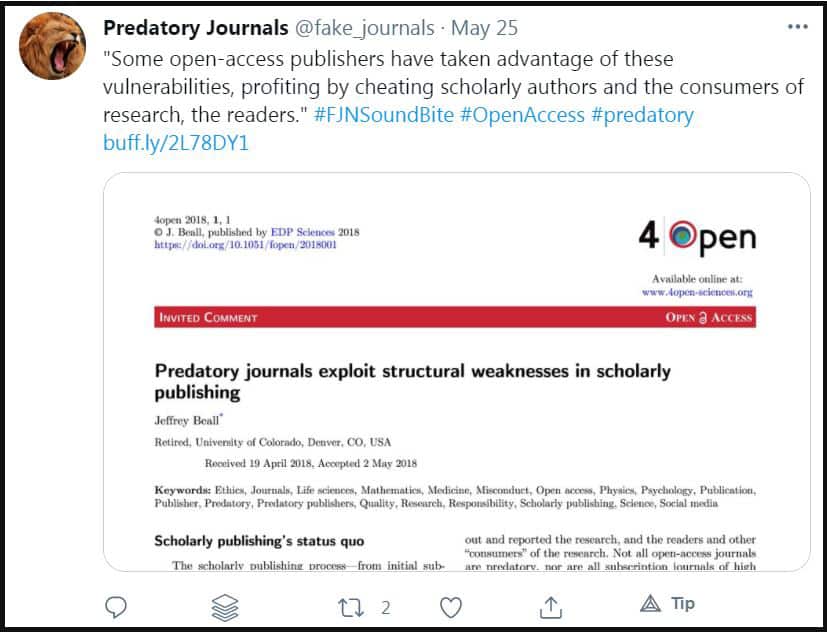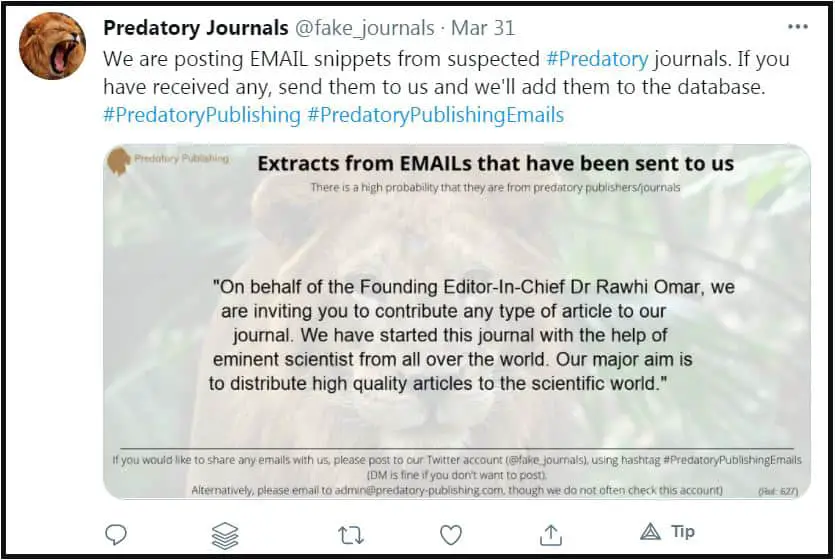Introduction
One of the features (we like to believe) of our Twitter account are the regular posts that feature “Soundbites” and “EMAIL snippets“. But what are they, why do we feature these and why do we feel that they are important? You might also wonder how many soundbites and EMAIL snippets we have in our database?
We hope that this article addresses these questions as we get asked them quite a lot and it gives us a place to direct people to when they ask, rather than answering each person individually.
Soundbites
What are soundbites?
Soundbites are our way of bringing to the attention of the community, scientific papers and, occasionally, other methods of communication such as blog posts.
We do this by taking a scientific paper and extracting small quotes from it. Typically, we get between 50-70 soundbites from each paper. It is difficult to be precise as it depends on factors such as the length of the paper and if the quotes are interesting.
More technical papers, typically, yield less soundbites as the technical issues made do not translate well into small snippets that can be read alone. That is not meant to detract from the paper. They are still excellent papers but not so suitable to be broken down into soundbites.
What do we do with these soundbites?
We use the soundbites as a source for our Twitter feed. We hope that a small quote from a paper will pique interest and persuade others to read the full paper. Even if the person who sees the tweet does not read the full paper, we hope that the small extract from the paper will raise awareness about the dangers of predatory publishing.
If you want to see a selection of soundbites, follow this link, which will take you to our Twitter feed, focusing on the hashtag #FJNSoundBite.
EMAIL Snippets
EMAILs from Predatory publishers
A common ploy of predatory publishers is to email potential authors in an attempt to get them to submit papers to their journals. These emails can exhibit the following traits, sometimes all of them:
- The grammar is questionable as the emails (we suspect) are not written by native English speakers.
- The emails use very flowery language in an attempt, we suspect, to show that they are in total command of the English language.
- The email often refers to the high quality research that you are carrying out and that you are an eminent scientist who they would be honored to work with. It does not seem to matter if you are a PhD student, an early career researcher or a Professor of many years standing. In their eyes your are eminent.
- They often cite a recent paper of yours, sometimes also reproducing the abstract, saying that they were impressed with it and that they would be delighted to have a follow up paper in their journal. It is almost certain that they have not read the paper (or the abstract) but simply collected the information using some automated process.
- The email does not often come from the editor-in-chief, but from an editorial assistant (or some other designation). It is often difficult, or impossible, to track this person down on any web site.
- The email often invites you to submit to a totally inappropriate journal, with regard to your discipline, showing that the email is just spamming anybody who they think might be desperate enough to publish with them.
- There is often no mention of Article Processing Charges (APCs).
- They will seek out any sort of paper (e.g. two page review, case study, letter to the editor, follow up to a recent paper). It appears that they just want anything, however short, as the subsequent charges will be the same whether paper is two pages or 20 pages.
- They often try and instill a sense of urgency by saying that they need one more paper to complete the current issue and can you submit something in the next few days.
This is by no means a complete list, but it does draw out the more common things to look out for.
What are EMAIL snippets?
For a while, we have been collecting these emails and posting small parts of them (snippets) on our Twitter feed. They are often amusing but, more importantly, they raise awareness of these type of emails.
We also request that people send us examples. You can either do this by posting them on Twitter (using the hashtag #PredatoryPublishingEmails, emailing us (admin@predatory-journals.com – although we do not check this account very regularly) or PM (Private Message) us on Twitter. We much prefer text, rather than an image, that we can copy and paste, but an image is fine if that is easier for you.
What do we do with the EMAIL snippets?
We use the EMAIL snippets as a source for our Twitter feed. We hope that a snippet from a real email will raise both a smile and awareness.
If you want to see a selection of EMAIL snippets, follow this link, which will take you to our Twitter feed, focusing on the hashtag #PredatoryPublishingEmails.
How do we keep things interesting?
For both soundbites and EMAIL snippets we try and present the data in different ways, so that our Twitter feed looks fresh and non-repetitive. It is certainly the case that the same soundbite and EMAIL snippet will be repeated, as we only have a finite number of each. Having said that, we do have thousands (see below) from which we can draw from, so they will not be repeated that often.
Even so, you might feel a little conned, knowing that we repeat the same messages. However, we would defend this by saying that we have so many soundbites and EMAIL snippets that they do not repeat very often. Even if they do repeat, we would imagine that the messages will reach different audiences as they will be posted at different times.
It may also be the case that what one user skips over one day, might grab their attention the next day.
We also present the same soundbite and EMAIL snippet in different ways.
Each quote/snippet has a set of images associated with it, so when it gets repeated, it is likely to have a different image. The background will also be different. At the time of writing we can select from three backgrounds. We chose this number as we want some consistency of the overall look, but also wanted to add some variability. We might, in the future increase the number of background images we chose from which would be very easy to so.
If you look at our tweets in a little more detail, you’ll see that the backgrounds for EMAIL snippets are pink in color and the soundbites are grey. This is to give some (perhaps) unconscious differentiation between the two types of tweet.
Finally, the images that are associated with EMAIL snippets are drawn from the same pool. There are quite a number of them, as we have a large number of EMAIL quotes to draw from.
By comparison, each soundbite has a set of its own images associated with it. Occasionally, the same image can be linked to the same soundbite but this is rare.
Footnote
We just want to add a note to what we have said above. We introduced a new system on the 27 May 2021. On that day, our soundbites and EMAIL snippets were presented slightly differently. Before this time, the soundbites presented an image of the paper, with the soundbite being part of the tweet. You can see an example below (Figure 3).
The EMAIL snippets presented the email text as part of an image, but we had no actual image in addition to the text. You can see an example below (Figure 4)
On the 27 May, we rolled out a new system, where the soundbite of the EMAIL snippet is presented on the image, along with a supporting image (see Figure 2). At the time of writing the image is on the left, with the text on the right. We could easily change this though, even doing this randomly.
We should note, that we did have an interim presentation (from about 13 April 2021) which was some way between the image shown in Figure 2 and that shown in Figure 4. This was really a trial for us, just to see if the new way of presenting tweets received any criticisms (it didn’t).
How many unique images do you have?
This is an interesting question.
Soundbites
At the time of writing, our database contained:
- 3 background images
- 2,192 soundbites (drawn from 42 papers)
- On average, each soundbite has about 5 images. It is probably a little more than this, but we decided to be conservative
- 10 random tweets, with one being chosen to be the textual part of the tweet
That means we have about (3 x 2,192 x 5 x 10) = 328,800 unique soundbite tweets.
If we just focus on the number of unique images (so ignore the text part of tweet), it is (3 x 2,192 x 5) = 32,880.
EMAIL snippets
At the time of writing our database contained:
- 3 background images
- 711 snippets
- 25 images, that are used across all the snippets
- 20 random tweets, with one being chosen to be the textual part of the tweet
That means we have (3 x 711 x 25 x 20) = 1,066,550 unique EMAIL snippet tweets.
If we just focus on the number of unique images (ignoring the text part of the tweet) , this is (3 x 711 x 25) = 53,325.
Creating the images
An obvious question is “How do you create all those images?“
This is a fair question, given that we have access to (32,880 + 53,325) = 86,205 unique images.
If fact, we do not actually create all of these images. One of our team has developed some software that only generates as and when they are required. Indeed, the images never actually exist, until they are posted to twitter and, once posted, they are deleted. Therefore, they only ever exist on Twitter. If you are really interested, we did create the images using PHP and if you want to know more about this server side processing language, take a look at PHP for Absolute Beginners or PHP Development Tool Essentials, if you are little more experienced.
We won’t go into the technical details about how we create the images. Our focus, on this platform, is predatory publishing and not how to automatically create social media images on the fly. Suffice to say, that it would not be possible to create all 86,205 images, and store them for future use. We had to find some way of automating the process so we only generate the image when required.
Final Remarks
Although this article is not about predatory publishing, we hope you found it interesting. It does give some insight into how we do some of the things we do.
We would welcome any ideas and/or feedback if you feel that we could do something to improve things.
